Community Engagement and Accountability in Weather and Climate Communication
By Collison Lore
With contributions from the ICPAC Climate Change Technical Working Group
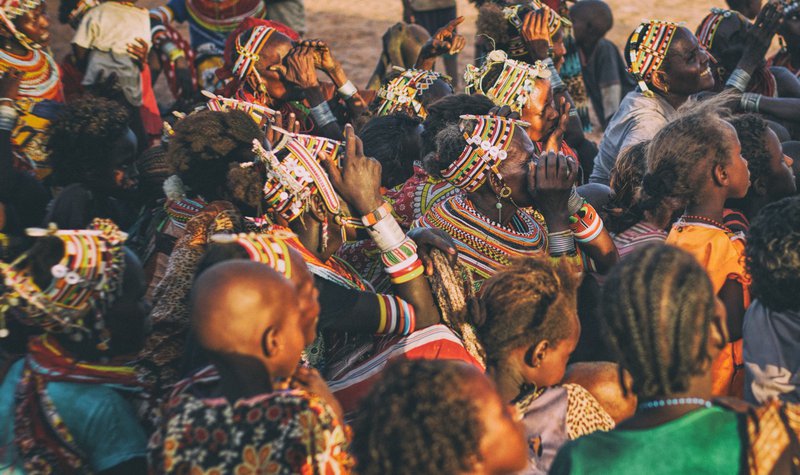
Background
Community engagement and accountability (CEA) is an approach supported by a set of activities that place communities at the heart of interventions, by integrating communication and participation. It is the process of, and commitment to providing timely, relevant and actionable life-saving and life-enhancing information to communities. Using the most appropriate communication approaches to listen to communities’ needs, feedback and complaints, ensuring they can actively participate and guide interventions and actions. CEA supports those involved in programmes and operations to adopt innovative approaches to better understand and engage with people and communities and help them address challenges within their settings. In the context of weather and climate this approach is essential to all key sectors such as food security, water, health and disaster risk reduction.
Communities at the heart of climate communication
National Meteorological and Hydrological Services (NMHSs) work towards providing reliable and timely weather, climate and related information to the community. These services play a vital role in bringing about disaster reduction through the delivery of quality public weather services, provision of weather forecasts, early warning on hazardous weather, outreach activities to enhance public awareness of weather hazards, interpretation and use of the weather information, as well as collaboration with disaster relief organizations to minimize loss of life and property. In a fast-changing world, it would be essential to not only engage communities using climate information, but also in-built accountability mechanisms on the information provided.
Engaging communities
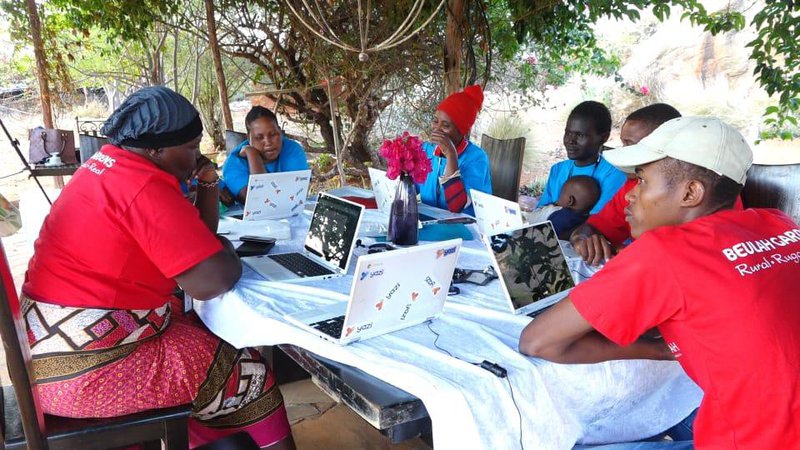
Grassroots famers during a Zoom Mashinani session facilitated by the Tsavo Media Network in Taita Taveta County, Kenya
Community participation refers to facilitating the active involvement of different community actors, together with the other stakeholders involved, and the many development and research agents working with the community and decision makers.
One approach developed under the Agricultural Climate Resilience Enhancement Initiative (ACREI) focusing on Ethiopia, Kenya and Uganda is the Season Media Action Plan (SMAP). The goal of ACREI project is to develop and implement adaptation strategies and measures that will strengthen the resilience of vulnerable smallholder farmers, agro-pastoralists and pastoralists in the Horn of Africa to climate variability and change.
- Joint season planning
The Season Media Action Plan (SMAP) seeks to bring together all stakeholder representatives into a media and meteorological session, and opens up the work approach of each stakeholder consequently increasing levels of trust through transparency. The sessions are ideally conducted jointly, with representatives of traditional forecasters, civil society organizations, farmers, pastoralists, local government, sector experts joining the meteorological authorities and the media during the session. The role of the meteorological authorities in the SMAP approach is to sensitize the media and other invited groups on the forecast and key elements such as advisories including technical forecast terminologies that impact on journalists reporting and subsequent end user understanding.
The sessions are free and all stakeholders are allowed to ask questions and seek clarification on terminologies and any issues relating to the season forecast.
- Zoom at the grassroots
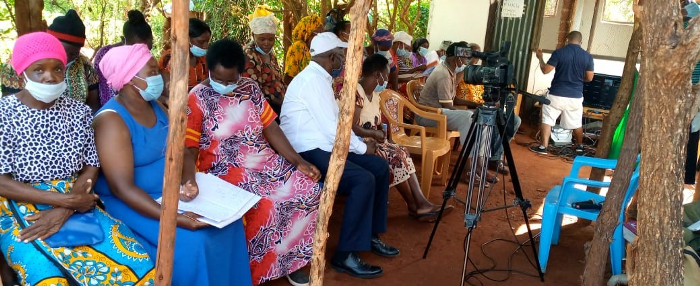
Grassroots famers during a Zoom Mashinani session facilitated by the Tsavo Media Network in Taita Taveta County, Kenya
Since the emergence of the COVID19 pandemic, zoom as a communication application has taken center stage. Under the ACREI project, zoom at the grassroots has been championed by local weather and climate journalists in Taita Taveta County in Kenya. Zoom at the grassroots seeks to respond to the challenge of the high-level perishability of weather and climate information and the need to engage the last mile users as soon as the information is available.
Application of zoom at the grassroots offers meteorological authorities in the region, indigenous traditional knowledge experts, farmers, pastoralists, fishermen and civil society organizations at the grassroots a platform to interface and provide a forecast that has a buy-in of a large segment of the community. The possibilities for two-way communication are enormous and weather and climate information flow can thus be significantly boosted using this innovation.
- Radio innovations
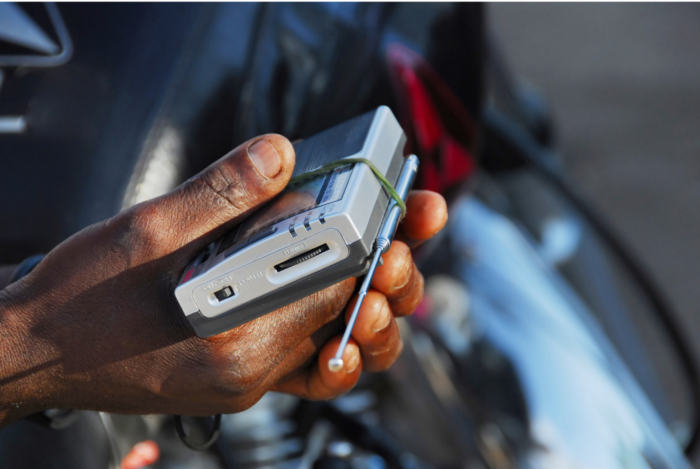
Surveys have shown that radio is the most trusted channel of weather and climate communication in Eastern Africa. There are a number of approaches that can be used via radio to boost community involvement. The use of participatory radio for example through talk shows that bring together stakeholders and allow for listeners to call and discuss issues that affect them in the context of weather and climate communication.
The use of radio drama or debates that refer to local contexts and characters also promotes increased interest and participation in weather and climate issues on radio. The formation of radio listening groups for women and youth also allows for responses on specific weather and climate issues to segments of the community that are often ignored.
Accountability approaches in weather and climate communication
The traditional approach to weather and climate communication has been to provide the seasonal forecast to stakeholders. This is backed up by the weekly and monthly updates to ensure that the forecast remains on track to provide the end users with a basis to make concrete seasonal decisions. This may thus look like a complete approach to accountability. However, it is essential to reinforce these updates through an interactive mechanism.
- Monthly weather and climate press conferences
Monthly press conferences on weather and climate in the context of the seasonal forecast provide an avenue for engagement and accountability (can be online). The participants in these press conferences may go beyond the meteorological authorities and involve other actors such as agriculture and livestock experts, disaster risk reduction stakeholders, health, water and energy sector players among others.
The media are therefore able to play their traditional watchdog role by holding the key actors to account during these monthly press conferences that span the entire season.
- End user weather and climate satisfaction surveys
The meteorological authorities in partnership with the local media can organize annual or half yearly satisfaction surveys on weather and climate This is to gauge the level of satisfaction of the end users and apply the lessons learned after every survey to boost weather and climate communication in the local context. During the COVID19 pandemic, approaches such as use of Kobo Toolbox have been applied.
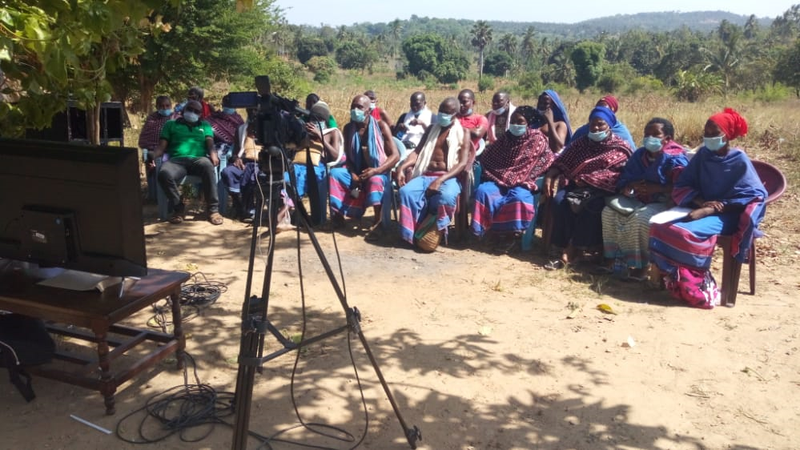
Grassroots famers during a Zoom Mashinani session facilitated by the Tsavo Media Network in Taita Taveta County, Kenya
Conclusion
It is not therefore enough to provide communities with climate information and assume that they are applying it for the purposes of decision making. It is essential to engage communities in the generation of weather and climate information while providing an accountability platform through which the authorities providing weather/climate information and key actors are able to provide regular explanations on the seasonal updates, through the media in an open and transparent fashion. If applied hand in hand with strengthened communication skills, through a platform to share relationship experiences and resources while building a shared vocabulary on weather and climate, community engagement and accountability can boost communication significantly.
